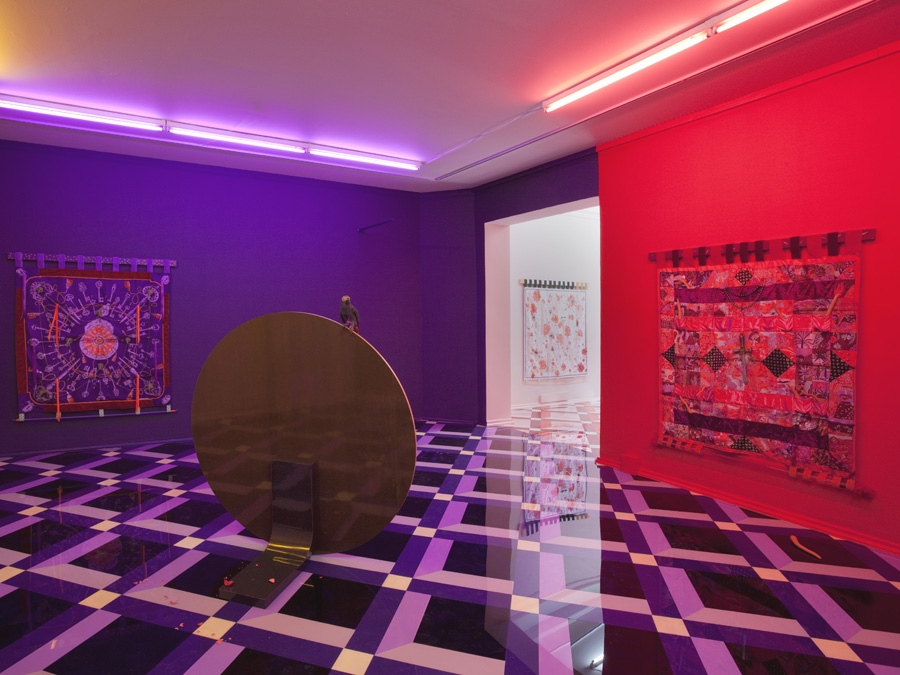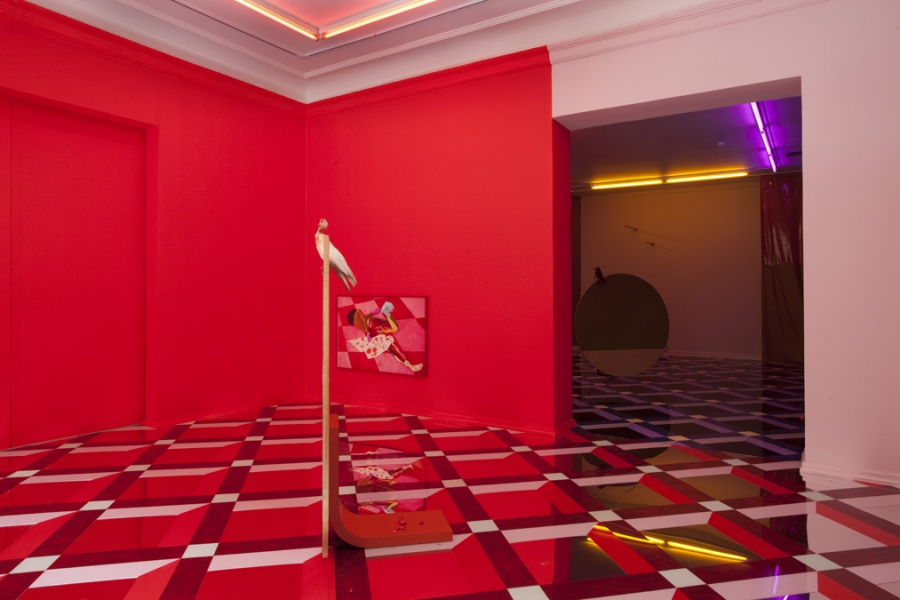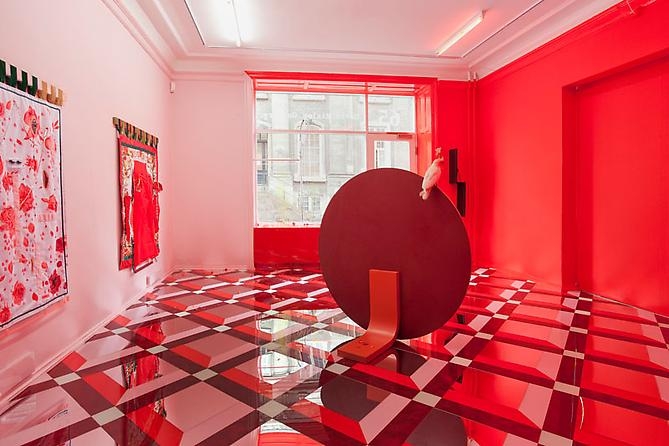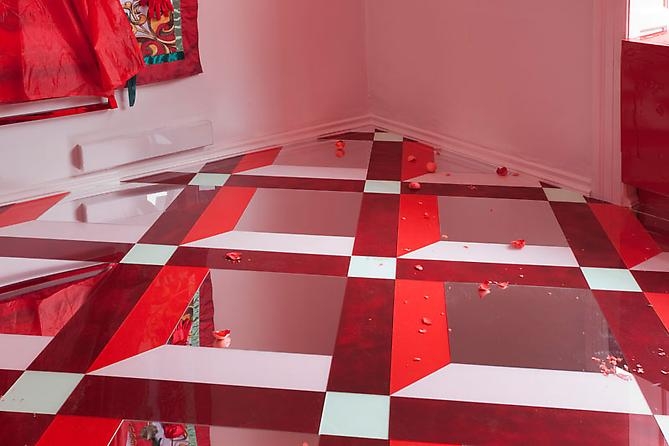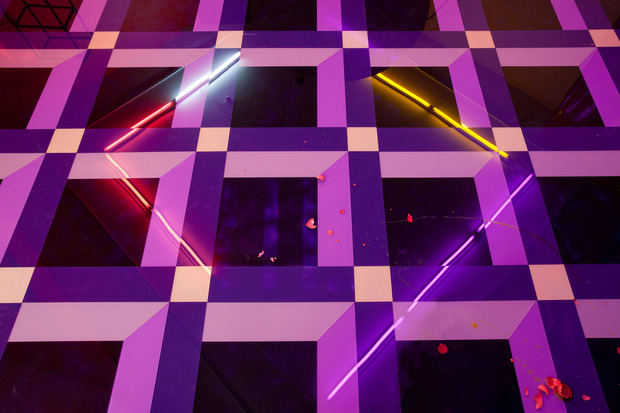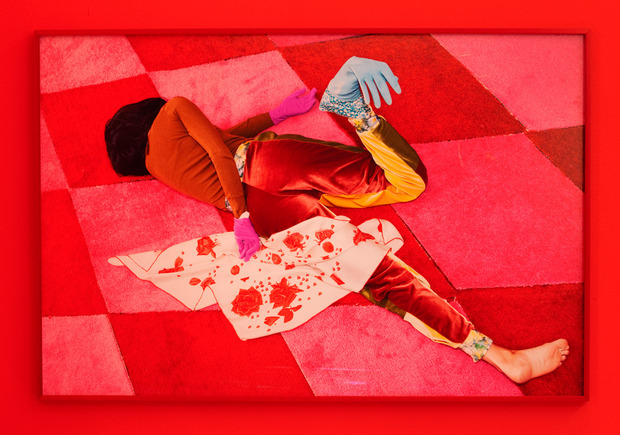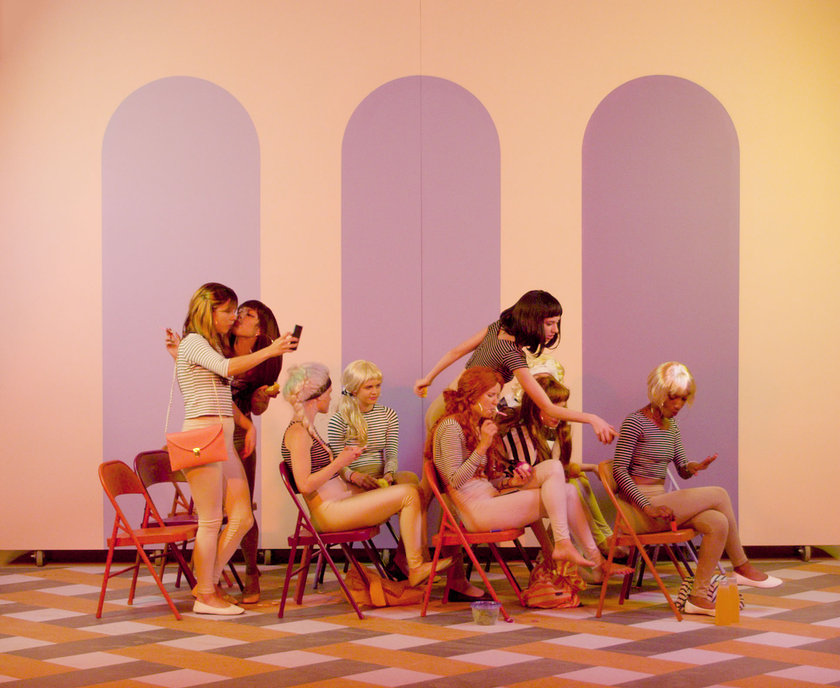INHALE is a cultural platform where artists are presented, where great projects are given credit and readers find inspiration. Think about Inhale as if it were a map: we can help you discover which are the must-see events all over the world, what is happening now in the artistic and cultural world as well as guide you through the latest designers’ products. Inhale interconnects domains that you are interested in, so that you will know all the events, places, galleries, studios that are a must-see. We have a 360 degree overview on art and culture and a passion to share.

Delirium I is the latest instalment in a series of works created by American artist Alex Da Corte in response to Arthur Rimbaud’s seminal poem in prose, A Season in Hell.
It transpires that hell, 140 years after the French poet published his masterpiece, isn’t other people but their mobile phones. According to Da Corte, these devices can act as a portal to our dreams or to a considerably less pleasant place. At David Risley Gallery in Copenhagen, the two rooms of Delirium I used colour, smell, texture and imagery to explore how hope and expectation can turn out to be the stuff of nightmare.
Alex Da Corte was born in Camden, N.J., in 1981 and currently lives and works in Philadelphia. He received his BFA from the University of the Arts and his MFA from Yale University in 2010.
Da Corte has recently mounted solo shows and presentations at the Institute of Contemporary Art, Philadelphia; Artspeak, Vancouver; Mother’s Tankstation, Dublin; the Institute of Contemporary Art, Portland, Maine; and Nudashank, Baltimore. His work has been shown at MoMA PS1, the Museum of Modern Art and the deCordova Museum, and he has participated extensively in gallery and non-profit exhibitions in the US and internationally.
In 2012, Da Corte was named a Pew Fellow in the Arts by the Pew Center for Arts and Heritage, Philadelphia.
We live in our phones although we sometimes occupy space beside other people. The telephone is our closest ally, the mediator between the present and our projection of the present. It is in some ways a portal to our dreams. It can be a portal to hell if used properly.
Scene One Room One
The viewer (you) enters the room. The smell of Calvin Klein’s Obsession lingers. There is an acrylic tiled floor. Its pattern is a lattice-type grid; the spaces in between the lattice lines are mirror. It appears as if you might have to walk only on the lines for fear of falling into nothingness. There is a green mirror shelf on the wall. As you enter you see yourself in green. You are comforted. You think of money. You are happy with what you see. You are hopeful that you may find someone like that after the opening at the gallery. You walk further into the space because you see a tapestry/quilt with roses on it. You think it’s an Hermes scarf; it makes sense since you are in a fancy part of town. There are beautiful roses on it. You see red. You are lustful. You see a photo of a woman lying on the floor. You pass by the other side of the green mirror shelf. There is a bloody knife on the shelf. You wonder if the woman is okay. She is clutching the beautiful Hermes scarf. You look at the scarf closely. and realize it is covered in blood drops and spiders and scabs. This scarf is in disguise. It is covered in blood drops and spiders and scabs. It is not the silk you imagined it would be, it is a horrible nylon banner, a cheap knockoff, a myth. You didn’t notice the broken eggs on the floor because you were cloudy from the CK perfume. This place is Hell and you hope to wake up. End scene.
Scene Two Room Two
The space is divided by laminated Ikea shelves. There are several knockoff Hermes scarves on the wall. There is food on the shelves and on the scarves. You want to eat it. You see two pictures of your lover. She is your monster and you are her doctor Frankenstein. You have made her all that she is and could be in your mind. You find that you are on the other end of the telephone. You have her by the bolts. You can bring her joy. You understand she is lost without you. You are cocksure. This is your home, your poem, so do what you want. You are in this space and feel comfortable, warm. You are the maker. You believe you are in control now.
Alas, all is not well. You grow hungry in the space and reach for the food. It is rubbery and tart. It provides no comfort. A telephone rings. But you see no phone. It may be your lover calling but you cannot pick up. Maybe she is calling you back. Maybe the love you made is truly the only thing that will cure your Hell. But in dreams, unfortunately, time is long and slow.
Da Corte’s delirious installation is bright, striking and overwhelming. He says, “The stage sets are comprised of quilts, photographs, perfumes, plastic tiles, and sculptures. It is the fifth installment of an ongoing series of work created in relation to ‘A Season in Hell.’”
The poem was written when Rimbaud was just 18, after a tempestuous affair with his contemporary Paul Verlaine. The poem has served as inspiration for artists for over a century, and has been published alongside the photographs of Robert Mapplethorpe.
Longtime friends and first-time collaborators Alex Da Corte and Jayson Musson create a major new commission for ICA. Featuring lesser-known strengths in their practices—video for Da Corte and language for Musson—Easternsports is a four-channel, multilingual soap opera starring the artists, both of whom have deep Philadelphia roots. A vignette-driven update of Thornton Wilder’s Our Town—equal parts Peter Greenaway and Jim Henson, David Lynch and Duck Amuck—the work will be presented as an in-the-round video installation.Scripted by Musson and directed by Da Corte, this institutional telenovela willbe developed and filmed in the summer of 2014.
Organized by Assistant Curator Kate Kraczon. Accompanied by a fully illustrated catalogue.
Exhibited SEPTEMBER 19–DECEMBER 28, 2014 – at Institute of Contemporary art, University Of Pennsylvania, Philadelphia.



